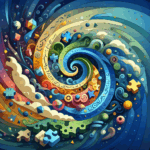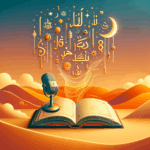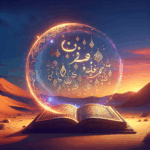The Arabic Alphabet in the World of Music and Dance 🎶🕺
The Arabic alphabet is not only a fundamental component of the Arabic language but also plays a fascinating role in the world of music and dance. From the rhythmic patterns that echo through traditional Arabic music to the graceful movements inspired by the script, the influence of the Arabic alphabet is both profound and captivating. Join me as we explore this intriguing intersection of language, music, and dance.
Table of Contents
1. Introduction to the Arabic Alphabet
2. The Role of the Arabic Alphabet in Music
3. Dance Movements Inspired by Arabic Script
4. Conclusion
5. FAQs
Introduction to the Arabic Alphabet 📝
The Arabic alphabet consists of 28 letters, and its script is known for its flowing, cursive style. Each letter can have up to four different forms depending on its position in a word. This versatility adds a unique aesthetic to written Arabic, which has inspired countless artists and musicians over the centuries.
The Role of the Arabic Alphabet in Music 🎵
Music in the Arab world often draws on the rhythmic qualities of the language itself. The phonetic sound of the alphabet can influence the melody and rhythm of a song. For instance, the guttural sounds of certain letters might be reflected in the deep, resonant beats of traditional Arabic percussion instruments like the darbuka.
Moreover, many Arabic songs employ poetic forms that are deeply rooted in the structure of the language. The repetition and rhyme schemes are reminiscent of the structured beauty of the alphabet, creating a harmonious blend of language and sound that captivates the listener.
Dance Movements Inspired by Arabic Script 💃
Arabic calligraphy is often described as a „dance of letters.“ This poetic description translates quite literally into the world of dance. The fluid curves and lines of Arabic script have inspired dancers to create movements that mimic these graceful shapes.
Popular dance forms such as belly dancing often incorporate gestures that resemble the sweeping motions of calligraphy. The undulating movements of the body can be seen as a living representation of the script, with each motion telling a story as intricate and beautiful as the language itself.
Conclusion 🌟
The Arabic alphabet’s influence extends far beyond the written word, enriching the worlds of music and dance with its rhythmic and aesthetic qualities. Whether through the beats of a drum or the sway of a dancer’s hips, the spirit of the Arabic script continues to inspire and captivate audiences worldwide. Embracing this cultural connection enhances our appreciation for both the language and the arts it influences.
FAQs 🤔
Q1: How many letters are in the Arabic alphabet?
A: The Arabic alphabet consists of 28 letters, each with unique forms depending on their position in a word.
Q2: What instruments are commonly used in Arabic music?
A: Traditional Arabic music often features instruments like the oud, qanun, and darbuka, each contributing to the rich, rhythmic soundscapes.
Q3: How does Arabic calligraphy influence dance?
A: The flowing lines and curves of Arabic calligraphy inspire dancers to create movements that mirror the script’s elegance, particularly in forms like belly dancing.
Q4: Can the Arabic alphabet influence other art forms?
A: Absolutely! The aesthetic and rhythmic qualities of the Arabic alphabet have inspired visual arts, poetry, and even modern design.
Q5: Is Arabic music popular outside the Arab world?
A: Yes, Arabic music has a global appeal, with many artists and audiences worldwide appreciating its unique rhythms and melodies.






